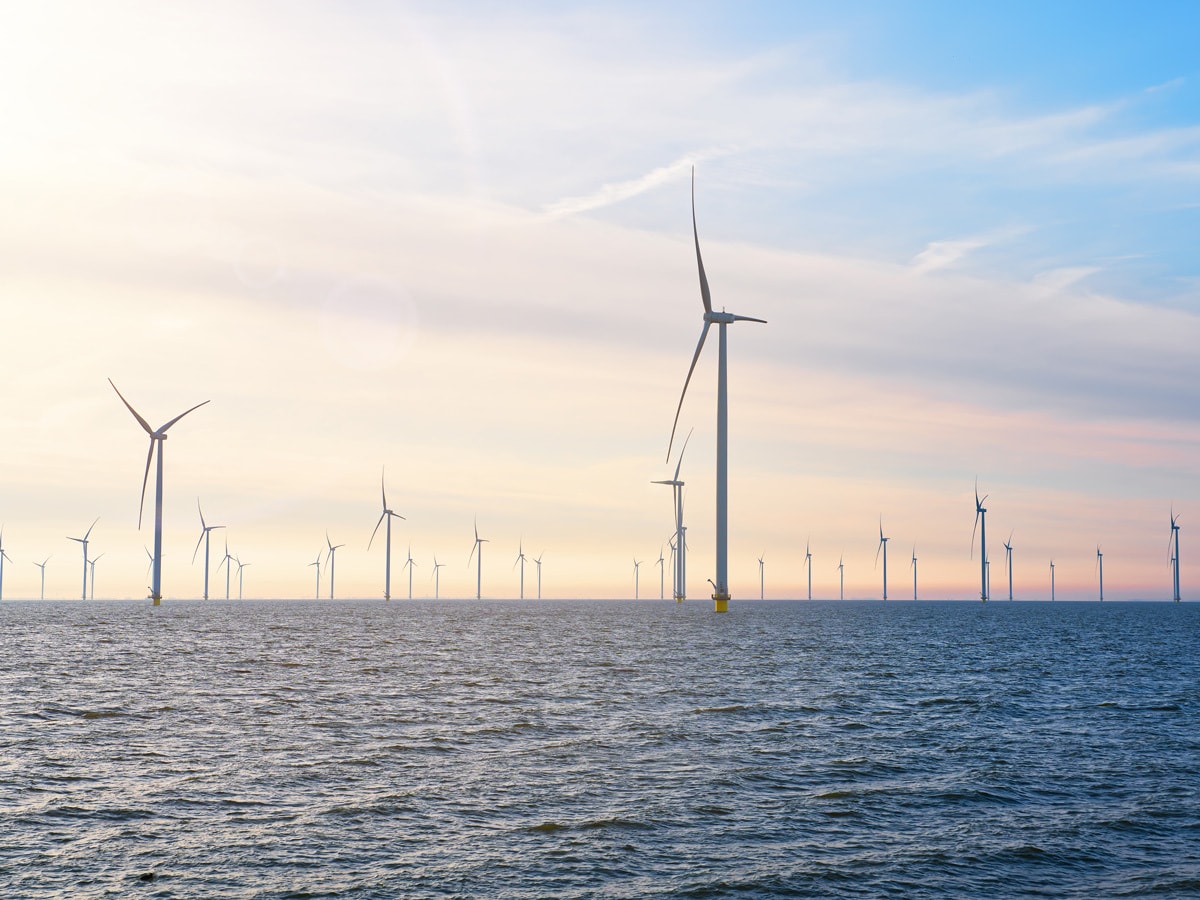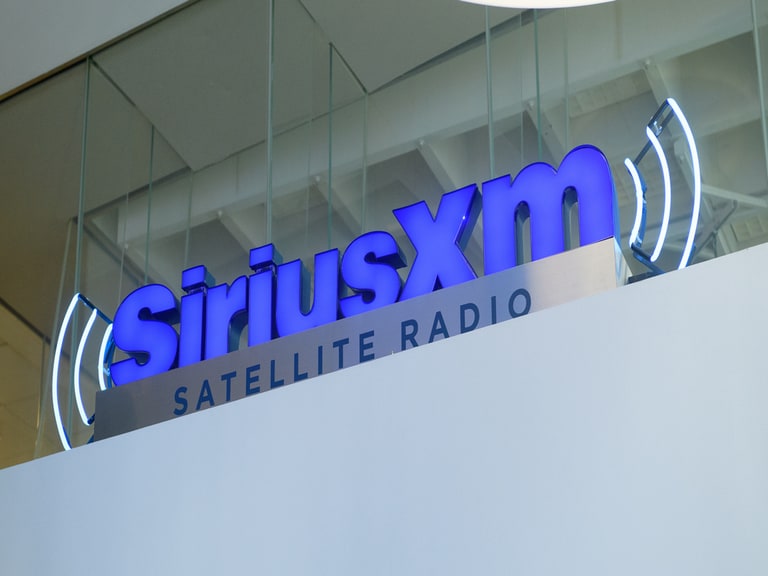The US has an ambitious plan to make offshore wind power part of its green energy mix, but a recent auction generated little interest and few bids. The government will also need to invest in its port infrastructure and technology to ensure the offshore wind industry isn’t blown off course.
- The US is targeting 110 GW of offshore wind power capacity by 2050, but the EU is targeting 400 GW.
- Innovations that expedite manufacturing of offshore wind turbines could reduce costs.
- How to invest in wind: the First Trust Global Wind Energy ETF is down 14% in the past six months.
Technology is the key to unlocking 80% more wind power in the US, according to a study published by the National Renewable Energy Laboratory (NREL) last week.
Much of the offshore wind opportunity is in areas with no existing wind farm deployment, such as the Gulf Coast. These areas are also close to electrical demand centres, which means new transmission is unlikely to be required to deliver wind energy at scale.
“These results show an unexpected opportunity to utilise wind power more extensively in regions where transmission infrastructure already exists or where incremental transmission could be built relatively cost effectively,” said Owen Roberts, an NREL analyst who was involved in the study.
The NREL study comes as another report in August warned that the US was not fulfilling its wind power potential, and is lagging behind the EU and China.
The US boasts an extremely high offshore wind potential — its coastlines and the Great Lakes region could generate approximately 4,000 GW of offshore wind, according to the report 2035 and Beyond, which was led by researchers at the University of California, Berkeley.
However, President Joe Biden’s administration is targeting just 30 GW of offshore wind power by 2030 and 110 GW by 2050. This pales in comparison with the EU target of 400 GW by 2050. China, meanwhile, has installed 20 GW in the past two years and is on course to hit 180 GW by 2035.
In order to hit the 110 GW by 2050 target, the US is likely going to have to invest in technology and supply chains, as well as encourage foreign offshore wind companies.
Ørsted Faces US Impairment Headwind
At the end of August, Danish wind power giant Ørsted [ORSTED.CO] warned investors that it may have to write down the value of its US portfolio, and may yet have to abandon it altogether. This is because of supply chain problems impacting its Ocean Wind 1, Revolution Wind and Sunrise Wind projects. The commissioning of Ocean Wind 1 may be pushed back to 2026.
While inflation and interest rates have also been a challenge, Ørsted is more concerned with the fact that discussions with US lawmakers about tax credits “are not progressing as we previously expected”, in the words of an August announcement. The company wants tax relief of at least 40%, but US lawmakers are not willing to go above 30%.
“The US offshore wind market remains attractive in the long term,” stressed David Hardy, Ørsted Executive Vice President and CEO for the Americas region.
RWE [RWE.DE] boosted its US offshore wind portfolio in August when it won a lease for the Gulf of Mexico. It could potentially have a capacity of 2 GW and power more than 350,000 homes.
Sven Utermöhlen, RWE Offshore Wind CEO, said in a statement that the company’s US business has “quickly expanded from coast to coast”.
Port Infrastructure Investment Needed
If the US is to capitalise on the growth opportunity presented by offshore wind, serious investment is needed in the country’s port infrastructure – offshore wind ports are used to manufacture and assemble offshore wind towers.
According to a report from the Business Network for Offshore Wind published Monday, the existing port infrastructure is one of the biggest bottlenecks hampering the US offshore wind industry. The US will need approximately 110 port sites across the east and west coasts and the Gulf of Mexico, but there are just 35 in operation or under development.
More than $2.5bn has already been invested in the US port infrastructure, but the Business Network for Offshore Wind has forecast that $36bn will be needed for President Biden’s target of 110 GW by 2050 to be met.
US Offshore Wind Auction Sees Lack of Bids
In good news for the US offshore wind industry, the interior department confirmed to Reuters this week that the government plans to complete its offshore wind leasing auction by the end of next year.
Several auctions have already been held since 2021, but the first — for the US Gulf of Mexico region in August — generated little interest. RWE was the only bidder awarded a lease for the region, while another two sites off the coast of Texas received no bids at all.
“It is striking just how bad the economics clearly must be in order for two of the three sites to remain unsold ... and for the site that was sold to go for such a low price,” Alon Carmel, a partner at PA Consulting who advises offshore wind companies, told the news agency.
All eyes will be on future auctions and the interest and bids they generate.
Innovation Could Help Capture Cost Efficiencies
Ultimately, the key to scaling up offshore wind energy will be the cost. Innovation should bring costs down, according to the NREL. In its report mentioned earlier, the organisation argued that offshore wind tower manufacturing could be advanced and sped up with the use of additive manufacturing, whereby parts could be assembled on-site at ports, reducing transportation costs.
Longer blades would help capture more energy per turbine, it added.
“Innovations, especially low-specific power and taller towers combined with modest cost reductions, could dramatically increase wind energy’s potential in the United States,” said NREL researcher Travis Williams.
How to Invest in Wind
ETFs, or exchange-traded funds, offer an economical and diversified way to invest in a variety of stocks within a particular theme.
Funds in Focus: the First Trust Global Wind Energy ETF
The Global X Wind ETF [WNDY], which holds Ørsted, has allocated 57% of its portfolio to utilities and 40.6% to industrials, while materials accounts for the other 2.4%, as of 31 August. The fund is down 24.5% in the past year and down 25.1% in the past six months.
The First Trust Global Wind Energy ETF [FAN], which holds both Ørsted and RWE, has allocated 60.6% of its portfolio to utilities and 34.8% to industrials. Materials and energy have weightings of 4.3% and 0.3% respectively as of 26 September. The fund is down 4% in the past year and down 14.2% in the past six months.
The iShares Global Clean Energy ETF [ICLN], which holds Ørsted, has allocated 22.2% of its portfolio to electric utilities and 22% to renewable electricity as of 25 September. The fund is down 24.6% in the past year and down 21.3% in the past six months.
Disclaimer Past performance is not a reliable indicator of future results.
CMC Markets is an execution-only service provider. The material (whether or not it states any opinions) is for general information purposes only, and does not take into account your personal circumstances or objectives. Nothing in this material is (or should be considered to be) financial, investment or other advice on which reliance should be placed. No opinion given in the material constitutes a recommendation by CMC Markets or the author that any particular investment, security, transaction or investment strategy is suitable for any specific person.
The material has not been prepared in accordance with legal requirements designed to promote the independence of investment research. Although we are not specifically prevented from dealing before providing this material, we do not seek to take advantage of the material prior to its dissemination.
CMC Markets does not endorse or offer opinion on the trading strategies used by the author. Their trading strategies do not guarantee any return and CMC Markets shall not be held responsible for any loss that you may incur, either directly or indirectly, arising from any investment based on any information contained herein.
*Tax treatment depends on individual circumstances and can change or may differ in a jurisdiction other than the UK.
Continue reading for FREE
- Includes free newsletter updates, unsubscribe anytime. Privacy policy






